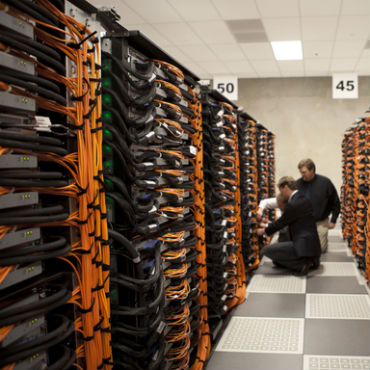Intell community seeks energy-efficient supercomputer

Superconductor technology may allow an expansion of computing speed while reducing power demands.

The MIRA supercomputer at Argonne National Laboratory. (File photo)
The intelligence community wants to develop superconducting supercomputers that could be potentially much faster and use far less energy than today's traditional supercomputers.
Such a supercomputing alternative could emerge as a viable option as the United States races to become the first nation to break the exaflop barrier in supercomputing, or might one day replace current high-performance computers that face power and cooling demands that "are rapidly becoming unmanageable problems," according to the public solicitation published by the Office of the Director of National Intelligence.
The IC's research arm, the Office of Intelligence Advanced Research Projects Activity, seeks partners for its Cryogenic Computing Complexity program that aims to "demonstrate a small-scale computer based on superconducting logic and cryogenic memory that is energy-efficient, scalable, and able to solve interesting problems."
The program is in its early phases, seeking new and improved approaches to cryogenic memory processes and logic, communications and systems, but such an effort wouldn't even be possible were it not for recent innovations.
"In the past, significant technical obstacles prevented serious exploration of superconducting computing, but recent innovations have created foundations for a major breakthrough," the solicitation states. "For example, the new single flux quantum logic circuits have no static power dissipation, and new energy-efficient cryogenic memory designs would allow operation of memory and logic in close proximity within the cold environment."
Superconducting supercomputers might sound like a super-cool technological proposition, but it's one driven by two things: performance and cost.
The world's fastest known supercomputers, the Department of Energy's 27-petaflop Oak Ridge National Laboratory-based Titan and China's 55-petaflop Milky Way 2, both consume vast amounts of energy, on the order of tens of megawatts. Existing technology scaled out to an exascale computing system – one capable of a quintillion, or 1,000,000,000,000,000,000 floating point operations per second (FLOPS) – would consume upwards of one gigawatt, half the maximum power output of the Hoover Dam.
Superconducting systems would offer a significant reduction in power demand, potentially as low as 200 kilowatts for a 100-petaflop system, according to IARPA. Assuming a completely scalable system, that equates to two megawatts for an exascale system using super-cooling to achieve zero- or near-zero electrical resistance.
Energy savings alone in those superconducting supercomputers could top tens or hundreds of millions of dollars versus traditional counterparts.
According to the DOE, developing an exascale computer is going to be an expensive endeavor. As reported by FierceGovernmentIT on Sept. 15, DOE's June report to Congress says that building an exascale supercomputer by 2022 would require $1 billion to $1.4 billion in funding.
NEXT STORY: Two eyed for CIO posts at DHS, FEMA



